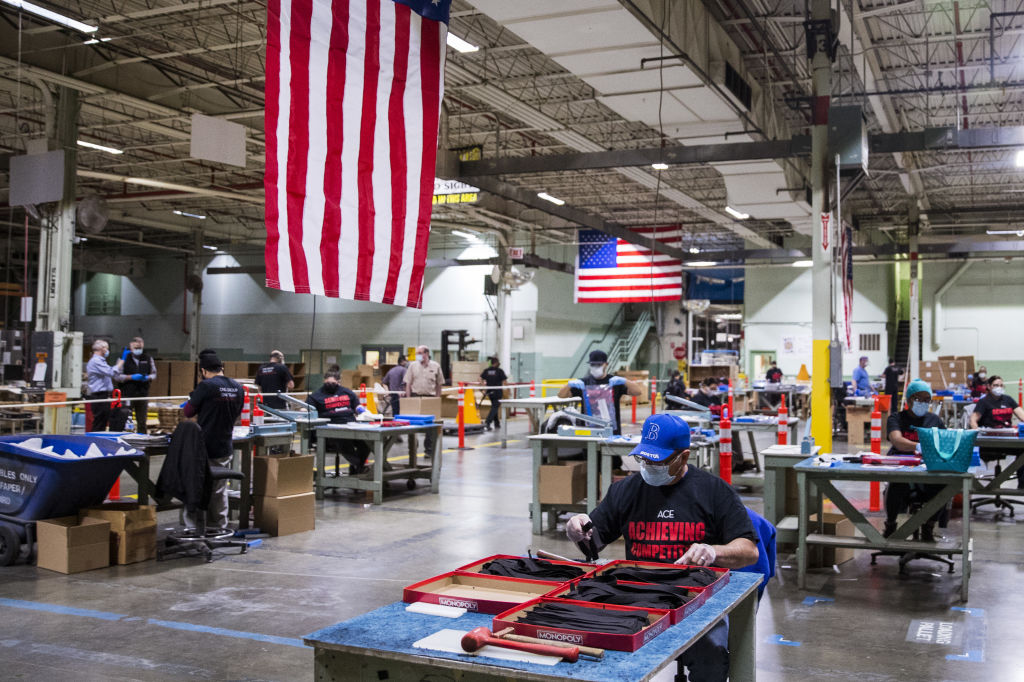
With the COVID-19 pandemic disrupting businesses around the world, the desire to keep operations up and running is butting up against companies’ need to keep their employees safe on the job. That’s leading many firms to pursue more novel ways of ensuring employees don’t get sick, maintaining social distancing, and outfitting employees with personal protective equipment (PPE).
Among the firms working on social distancing solutions: Pathfindr, a U.K.-based asset tracking company. Pathfindr makes sensors designed to track components during the manufacturing process using technology like Bluetooth and GPS, and started with a product designed to keep track of housecats for a BBC documentary. “Cats like to sleep a lot…that was the valuable insight from that exercise, but it was good for us,” says Pathfindr Managing Director Matt Isherwood. Good indeed, because that show caught the attention of Rolls-Royce Aerospace, which was looking for a way to keep tabs on jet engine parts in its various facilities. The company, spun out into its own business unit in 2016, has picked up other clients along the way, including Singapore Airlines and PepsiCo.
As COVID-19 spread around the world, Pathfindr’s engineers began experimenting with ways to help people maintain proper social distance, creating prototypes like motion-sensitive jewelry that would zap a wearer if they reached for their face. The end result: a gadget called the “Safe Distancing Assistant,” which warns users when someone else also using one of the devices comes within their six-foot bubble. The device, which works via Bluetooth and ultra-wideband radio, has received positive feedback from clients like Bentley Motors and GlaxoSmithKline, both of which are looking to keep employees separated in enclosed spaces, Pathfindr execs say. “From a commercial perspective, they need to get up and operating again,” says Isherwood. “There are real financial as well as human factors behind it.”
Meanwhile, while factories themselves may not seem like an obvious candidate for remote work, many manufacturers are looking for ways to let more employees work from home. “We’re seeing a large shift in spending away from large IT-centric applications to more digitization processes to give the ability to remotely manage, monitor, and diagnose,” says IDC’s Kevin Prouty, who tracks the energy and manufacturing sectors. “You’re still always going to have what I call ‘wrench turners,’ people on-site to do stuff. But what they’re trying to with that support staff, that engineering staff, is to pull as many people out of the operation as possible and have them work remotely.”
The manufacturing world was trending toward remote operation even before the outbreak, but the pandemic is accelerating that shift. Even after COVID-19 is over, “manufacturers expect about a third of their employees to still be working from home,” says Prouty. That reduced in-office headcount could be beneficial for social distancing purposes, but will also mean a shift in how people in the sector work and operate, or even if they’ll have an office when they do come in to work. “Most of those engineers will probably never come back to the plant on a full-time basis,” says Prouty.
Not everyone in manufacturing can work remotely, of course. So as the pandemic rages on, companies still need to make sure in-person workers have adequate PPE, like face masks and shields. But that gear can be hard to come by. That’s why companies like Lulzbot, a 3D-printing firm, has been using additive manufacturing—the process of creating a product layer by layer—to make customized face shields and face mask extenders (colloquially known as “ear savers”).
“That’s something that we were able to jump into and help with this spring, especially heavily before the injection molders could get tooled up,” says Lulzbot CEO John Olhoft, referring to another type of manufacturing process. So far, the firm has supplied PPE to medical professionals, the West Virginia National Guard, and John Deere (which even created face shield attachments for its trademark green-and-yellow ballcaps). That Lulzbot 3D prints its own parts in-house means it can keep churning out more supplies so long as it has enough build materials, like ABS plastic.
These innovations may be useful even outside the business realm. Isherwood thinks Pathfindr’s roughly $65 social distancing device, for instance, could be useful at places like theme parks, to help ensure social distancing and keep families close together. Their alarms could even give people cover to gently request that an interloper keep their distance without risking a confrontation, he says. “It really does keep people apart, because you don’t want the alarm going off,” says Isherwood.
More Must-Reads from TIME
- Cybersecurity Experts Are Sounding the Alarm on DOGE
- Meet the 2025 Women of the Year
- The Harsh Truth About Disability Inclusion
- Why Do More Young Adults Have Cancer?
- Colman Domingo Leads With Radical Love
- How to Get Better at Doing Things Alone
- Michelle Zauner Stares Down the Darkness
Write to Patrick Lucas Austin at patrick.austin@time.com